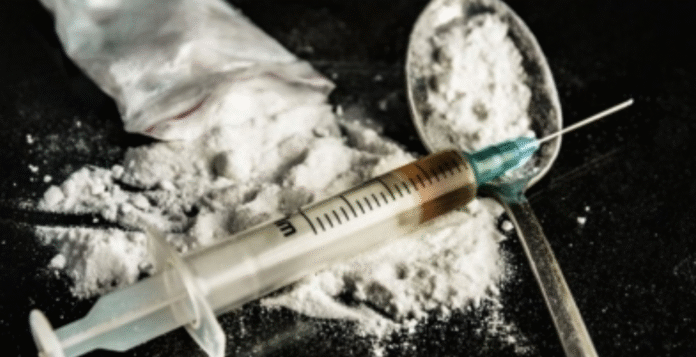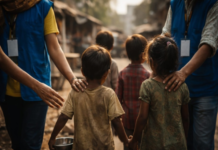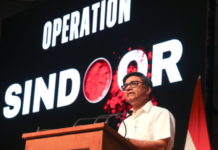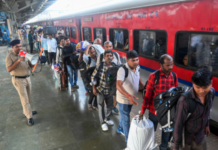New Delhi— India’s narcotics crisis is entering a new and dangerous phase. Once dominated by traditional smuggling routes through Afghanistan and Pakistan, the focus of drug cartels has now dramatically shifted — South India has emerged as the country’s latest hub for narcotics trafficking.
While enforcement agencies historically concentrated their efforts in the northern corridors, today it is Kerala and Tamil Nadu that dominate headlines — not just as points of consumption, but as key international transit zones for organized drug syndicates.
A Coastline Tailor-Made for Smuggling
With a 590-kilometer coastline, Kerala offers the perfect cover for smugglers. Its busy seaports and international airports further ease operations for traffickers, who now increasingly use maritime routes. For those ferrying drugs from Sri Lanka, Tamil Nadu is the first port of call, with smuggling operations often unfolding under the radar along the southeastern seaboard.
Intelligence from the National Investigation Agency (NIA) has confirmed the growing involvement of international drug cartels, using Tamil Nadu both as an entry and redistribution point.
One of the most startling revelations came with the arrest of a former DMK functionary, who was identified as the mastermind behind a ₹2,000 crore global drug racket. Investigators later linked him to a broader India–Australia–New Zealand drug trafficking network, underscoring how deeply embedded such operations have become.
Golden Crescent and Golden Triangle Meet in Kerala
Kerala’s vulnerability isn’t accidental — it’s geographically strategic. The state has become a confluence point for cartels from both the Golden Crescent (Afghanistan, Pakistan, and Iran) and the Golden Triangle (Myanmar, Laos, and Thailand).
Golden Crescent: Focuses primarily on opium and heroin.
Golden Triangle: Specializes in methamphetamine and marijuana.
Once landed, narcotics are routed through Tamil Nadu, Andhra Pradesh, West Bengal, and into the Northeast — including Assam, Meghalaya, and Manipur — making Kerala a national distribution launchpad.
Cross-Border Corridors and Sophisticated Networks
Smugglers exploit Kerala’s borders with Karnataka and Andhra Pradesh, channeling heroin, cocaine, synthetic drugs, and cannabis. Investigations also reveal that many local networks operate in tandem with Nigerian nationals, who coordinate drug handovers between international suppliers and local dealers.
The operations are sophisticated. Agencies have discovered that traffickers conceal drugs in airtight bags placed inside fruit juice tetra packs or chocolate boxes — a tactic designed to evade scent detection and customs scrutiny.
Legal Loopholes and Micro-Smuggling Tactics
Smugglers trafficking marijuana have also begun to exploit a loophole in the Narcotic Drugs and Psychotropic Substances Act (NDPS). By carrying just under 20 kilograms, they avoid classification under “commercial quantity,” which means less severe punishment and quicker bail if caught.
High-Profile Seizures and Coastal Warnings
In November 2023, the Indian Coast Guard intercepted a fishing trawler near the Andaman and Nicobar Islands carrying 6,000 kg of methamphetamine, valued at a staggering ₹36,000 crore — one of India’s largest-ever drug hauls.
The vessel, crewed by six Myanmarese nationals, was believed to be en route to Thailand, but investigators suspect that a portion of the consignment was meant for South Indian networks, particularly in Kerala.
This wasn’t the first sign of trouble along the islands.
A few years ago, packets of Chinese tea washed ashore in the Nicobar Islands. Initially ignored, locals later discovered the packets contained potent narcotics. Some fell into addiction. Others saw opportunity. Kerala-based smugglers caught wind of the development and bought the packets cheaply from islanders, selling them on the mainland at a huge profit.
In another incident in September 2019, the Coast Guard seized 1.16 kg of narcotics from a ship sailing from Myanmar. But the crew, sensing danger, had already dumped 4,000 kg of contraband into the sea, some of which later floated to the Indian coastline.
Tourism and Trafficking: A Dangerous Mix
South India’s appeal to international tourists — especially in Kerala and Goa — has also played a role in narcotic expansion. The influx of foreigners has created demand, while also giving cover for cartel operatives posing as tourists.
Agencies suspect that South Indian migrant workers in the Gulf may also be unknowingly or knowingly acting as drug mules. With drugs increasingly coming from Dubai, Iran, and other Middle Eastern countries, enforcement officials are now scrutinizing travel patterns and customs checks more closely.
The Challenge Ahead
What began as low-level smuggling has now exploded into a full-blown international narcotics network operating from South India. Allegations of corruption, administrative apathy, and loopholes in the legal system have only allowed these cartels to flourish.
With cartels becoming more organized and inventive, Indian law enforcement faces a growing challenge — not just in interception, but in dismantling a deep-rooted and transnational drug empire that now calls South India its home base. (Source: IANS)













